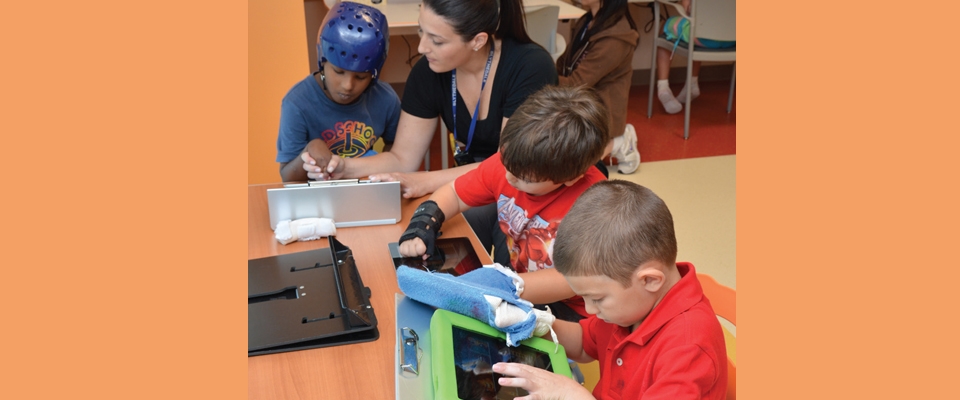You are here
Applying Neuroscience Advances to Children with Hemiplegia
The Burke-Blythedale Hemiplegia Center is a multidisciplinary center where children with hemiplegic cerebral palsy can receive expert medical care and participate in state-of-the-art rehabilitation research.
For children with one-sided weakness, this collaborative Hemiplegia Clinic offers patients an opportunity for a multidisciplinary examination, including consultation with pediatric neurologists and occupational therapists who are familiar with hemiparesis. The team will meet and discuss their recommendations for optimal care with parents. If appropriate, patients and parents will be told about clinical research studies that are ongoing at Burke and Blythedale.
What does the Hemiplegia Program offer?
- Full assessments for children with hemiplegia.
- Referrals to therapies and treatments, including physical, occupational, speech, and vision therapies.
- Treatment of spasticity and joint contractures.
- Enrollment in cutting-edge clinical research trials, including robotic therapy, intensive hand therapy, and non-invasive brain stimulation.
What is it like to participate in our research?
- Take a tour of our lab and hear what kids have to say in the video introduction below.
- Contact us for clinical trials and evaluations.
For Kids!
Intensive Upper Extremity Summer Program
This program has been thoughtfully designed for children who have decreased use of one upper extremity due to hemiparesis or hemiplegia as a result of cerebral palsy, traumatic brain injury, stroke or other diagnoses. This six-week program is directed and implemented by Blythedale’s occupational therapists and Day Hospital teams, who utilize the concepts of constrained induced and bimanual therapy to help children with weakness and limited use of one arm. A typical day during this program includes a variety of activities such as arts and crafts, sports/playground activities, sensory play, self-care activities, and exercises to strengthen the upper extremity and improve range of motion.





